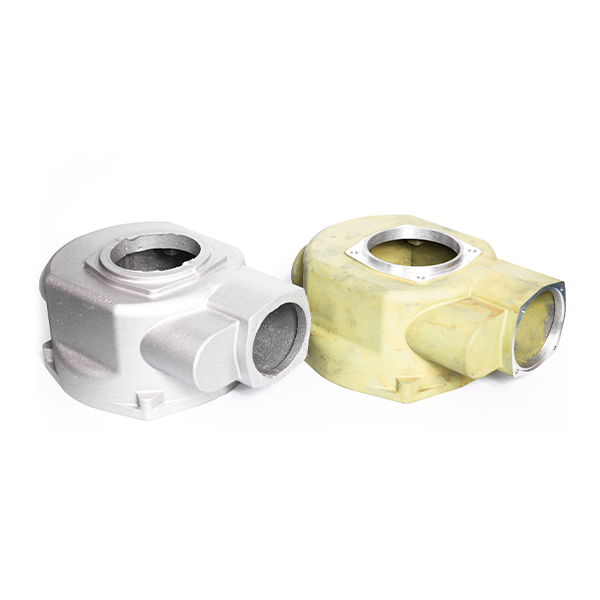Mobile:+86-311-808-126-83
Email:info@ydcastings.com
Understanding Lost Foam Aluminum Casting Techniques and Their Benefits in Manufacturing
Understanding Lost PLA Aluminum Casting
Lost PLA (Polylactic Acid) casting is an innovative method that combines the advantages of 3D printing with traditional casting techniques. This process enables the production of complex aluminum components that would be difficult or impossible to manufacture using conventional methods. The use of PLA as a pattern material offers several advantages, including precision, ease of handling, and minimal environmental impact. This article delves into the intricacies of lost PLA aluminum casting, exploring its methods, advantages, and potential applications.
The Process of Lost PLA Casting
The lost PLA casting process begins with creating a 3D model of the desired aluminum part using computer-aided design (CAD) software. Once the design is finalized, it is printed using a 3D printer that employs PLA filament. PLA is chosen for its biodegradability and ease of use; it can be melted away without leaving harmful residues. The printed PLA pattern serves as a representation of the final aluminum component.
After 3D printing, the PLA pattern is typically coated with a ceramic material to create a mold. This coating is essential as it ensures the mold can withstand the high temperatures involved in aluminum casting. Once the ceramic coating has hardened, the PLA is melted and removed, leaving behind a precise cavity in the mold that mirrors the original design.
Next, molten aluminum is poured into this cavity. The aluminum cools and solidifies within the mold, taking on the intricate details of the original PLA pattern. After sufficient cooling, the ceramic mold is broken away to reveal the final aluminum castings. This method not only showcases the benefits of 3D printing but also opens new avenues for producing lightweight and complex metal parts.
Advantages of Lost PLA Aluminum Casting
Lost PLA aluminum casting offers a variety of benefits, making it an attractive option for manufacturers and designers. One of the primary advantages is the ability to produce highly intricate and detailed parts. Traditional methods of aluminum casting often limit complexity due to tooling constraints, whereas lost PLA casting harnesses the precision of 3D printing, allowing for more elaborate geometries.
lost pla aluminum casting

Another significant benefit is the reduction in lead time and production costs. By eliminating the need for expensive tooling and molds typically associated with traditional casting processes, manufacturers can accelerate the prototyping phase and bring products to market faster. Additionally, since the patterns are made from PLA, they can be printed on-demand, further optimizing resource use and minimizing waste.
Furthermore, lost PLA casting is environmentally friendly. PLA is derived from renewable resources, such as cornstarch, making it a sustainable alternative to petroleum-based plastics. The reduction in material waste during the casting process, combined with the eco-conscious nature of PLA, aligns with the growing demand for sustainable manufacturing practices.
Applications of Lost PLA Aluminum Casting
The versatility of lost PLA aluminum casting extends across various industries. It is particularly beneficial in aerospace and automotive sectors, where lightweight components are essential for improving fuel efficiency and performance. Custom tooling and prototyping for these industries can significantly shorten development cycles and reduce costs.
In the art and design world, lost PLA casting allows artists and designers to create unique and intricate sculptures and installations. The ability to transform digital designs into tangible aluminum artworks opens new creative avenues, merging technology with artistic expression.
The medical field also stands to benefit from lost PLA aluminum casting. Custom implants and prosthetics that require precise specifications can be manufactured more efficiently, improving patient outcomes through tailored solutions.
Conclusion
Lost PLA aluminum casting is transforming the way manufacturers approach production, offering a blend of innovation and efficiency. By leveraging the advantages of 3D printing with the strength and durability of aluminum, this method opens up new possibilities for creating complex, lightweight components across various industries. As technology continues to advance, the potential for lost PLA casting is only expected to grow, leading to even more sustainable and efficient manufacturing processes in the future.
-
Why Should You Invest in Superior Pump Castings for Your Equipment?NewsJun.09,2025
-
Unlock Performance Potential with Stainless Impellers and Aluminum End CapsNewsJun.09,2025
-
Revolutionize Your Machinery with Superior Cast Iron and Aluminum ComponentsNewsJun.09,2025
-
Revolutionize Fluid Dynamics with Premium Pump ComponentsNewsJun.09,2025
-
Optimizing Industrial Systems with Essential Valve ComponentsNewsJun.09,2025
-
Elevate Grid Efficiency with High-Precision Power CastingsNewsJun.09,2025











